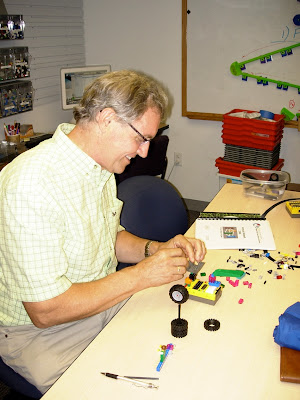
The Tufts University Center for Engineering Educational Outreach (CEEO), located in Medford, MA, provides programs and workshops for teachers and youth who use either the NXT or the RCX version of LEGO MINDSTORMS.
The center provides a summer program for youth in 3rd-5th grades, as well as workshops for educators.
Educators who attend CEEO workshops will:
- Learn about the Engineering Design Process
- Learn LEGO building techniques
- Learn about programming with ROBOLAB or NXT-G
- Participate in hands-on activities such as fractions and graphing.
- Explore Gearing and Gear Ratios
- Explore the pedagogy of using hands-on engineering projects
- Investigate how to teach content through engineering based projects
- Discuss and develop classroom management strategies
The center also sponsors an engineering symposium for Educators who use LEGO MINDSTORMS in the classroom. Below is an outline of the next symposium in Massachusetts, which is still accepting registrants. (Click on the graphic for an enlarged view):

The center also co-sponsors conferences on engineering education throughout the US, as well as in Europe and Japan. For a complete listing of upcoming conferences, click here.
Below are two photos of Robert Rasmussen, the director of the center. The second photo shows Mr. Rasmussen in the center’s “Building Room”. (Click on each photo for an enlarged view).


More information about the center and its programs is